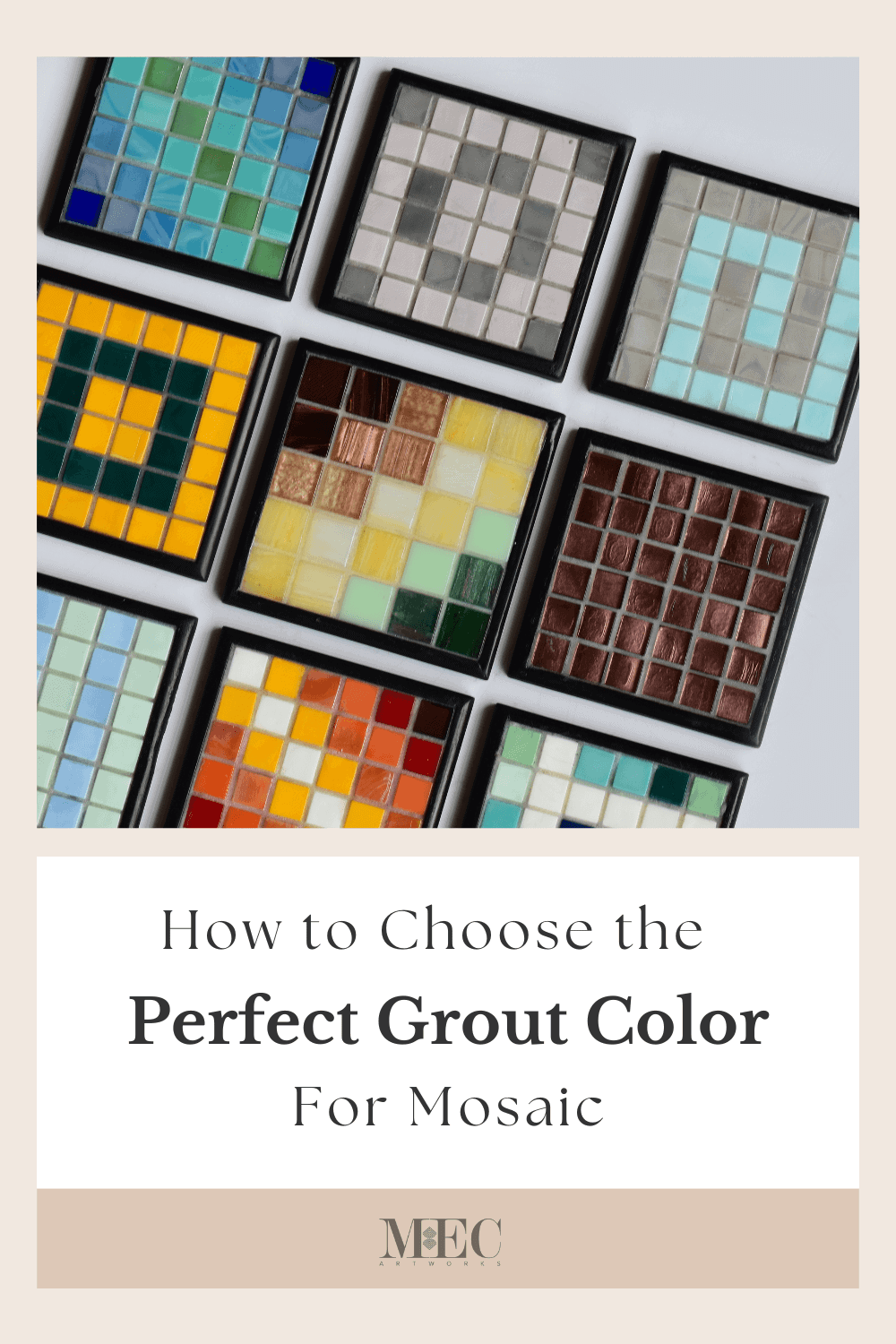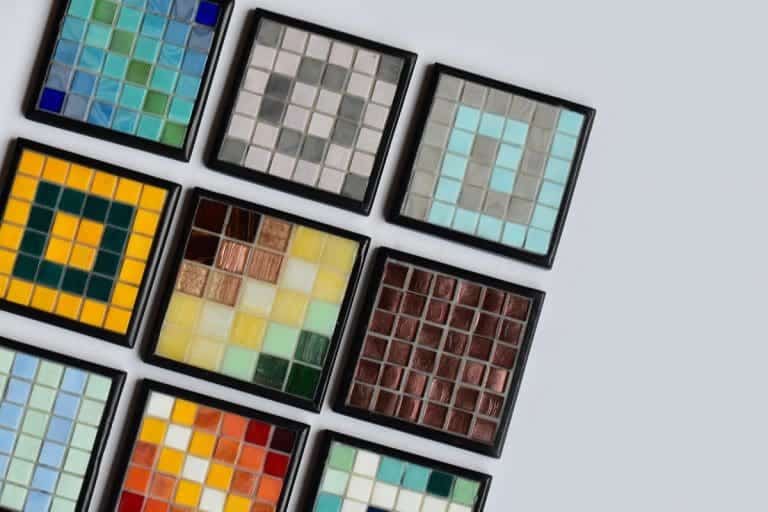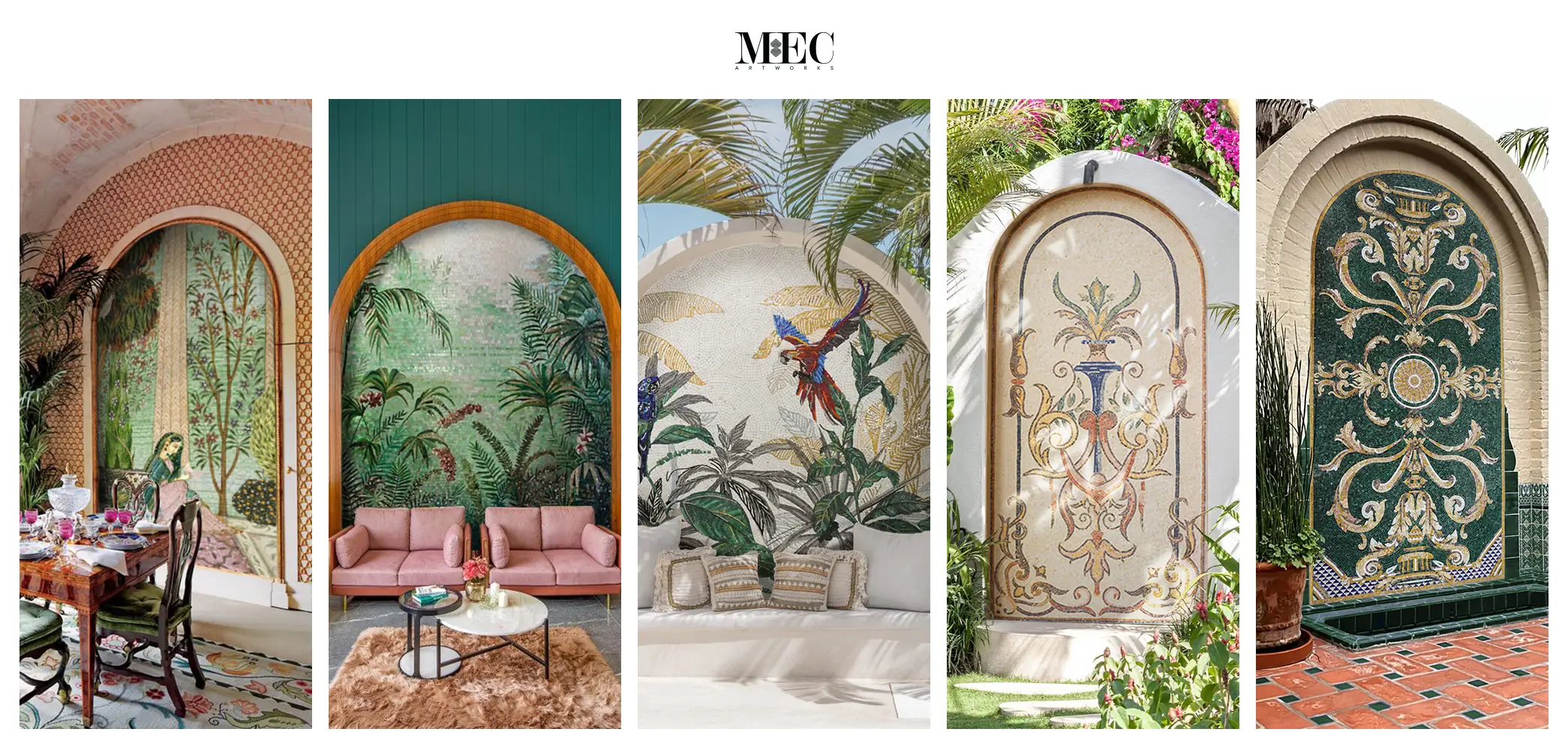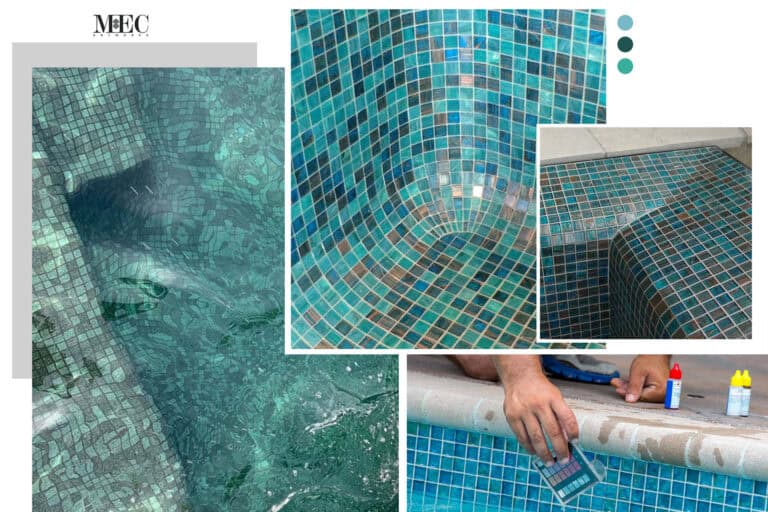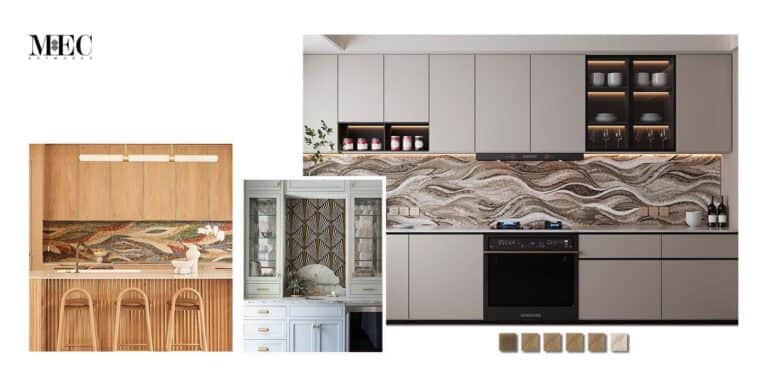When it comes to picking the perfect glass mosaic tile art for your wall or backsplash, there are so many choices to make; from tile type and texture to size, colors, and design. With millions of combinations, the possibilities are truly endless.
Once the mosaic tile art is chosen and finalized, the grout details are often overlooked. The importance of picking the right grout is somehow overshadowed by the overwhelming tile choices and decisions.
The grout color can make or break the look of your brand new mosaic tile art. It is more than the binding material that holds your tiles together and prevents cracking. The grout significantly impacts the overall appearance of the art tiles. The goal is to find a shade that can nicely contrast the tile color and helps to give that “mosaic effect” to the design in a subtle manner without being too overpowering.
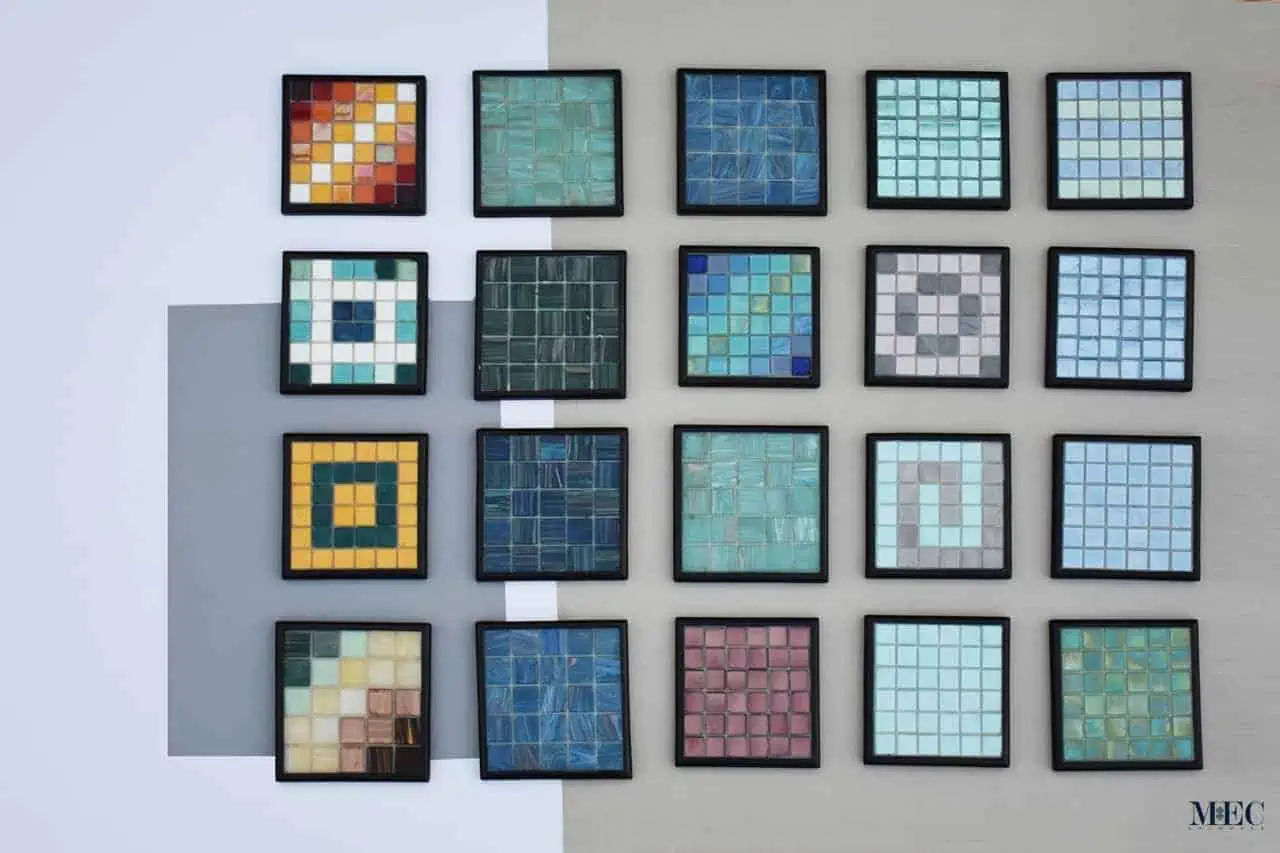
Table of Contents
- A. Grout Color for Single Color or Monochrome Mosaics
- Classic vs. Alternative Grout Colors
- Some Vibrant Grout-Tile Duos & Ideas for Your Mosaic
- Tips for Choosing the Right Grout Color
- Post Installation Color Adjustment & Grout Preservation
- B. Grout Color for Multicolored Mosaic Artworks
- Custom Mosaic Artwork Challenges
- Translucent Epoxy Grout: A Game-Changer
- Sources & Further Reading
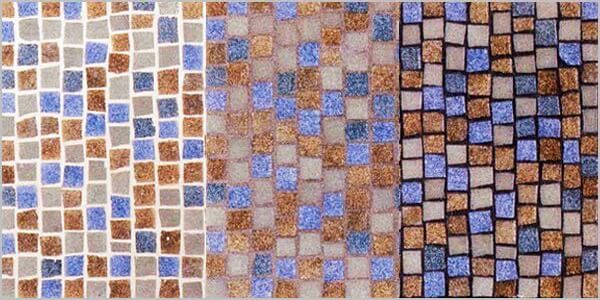
A. Grout Color for Single Color or Monochrome Mosaics
Classic vs. Alternative Grout Colors
Classic neutral grout colors, such as black, white, cream (or shades of beige), and gray, have stood the test of time for their versatility and timeless appeal. However, alternative colors like browns, blues, and greens can add a unique touch. Consider the look you want – whether it’s a separated tile appearance, a blended effect, or a bold contrast – and how it complements the space where the mosaic will be installed. The choice between classic and alternative hues depends on the ambiance you wish to create and the visual impact you desire.
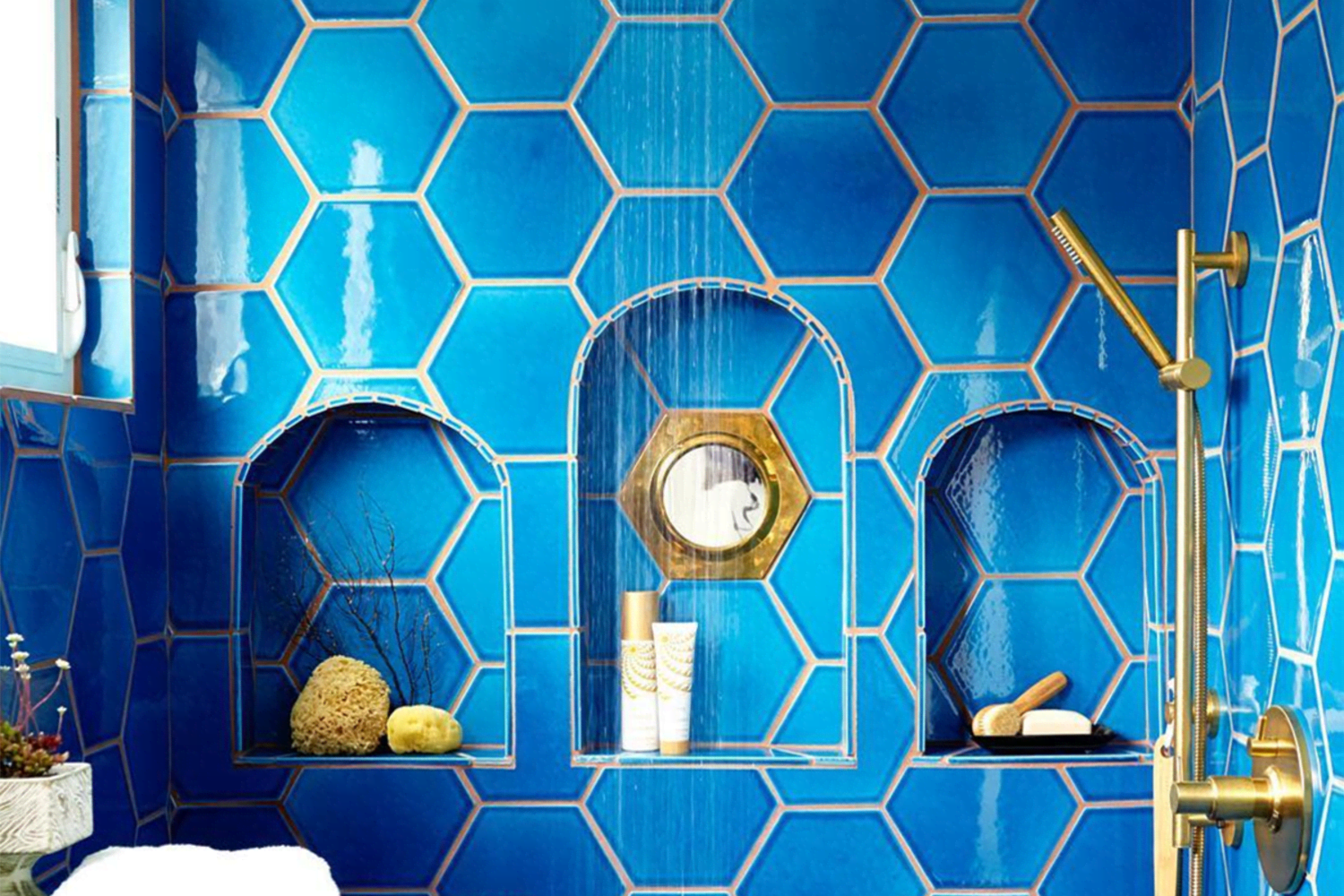
Some Vibrant Grout-Tile Duos & Ideas for Your Mosaic
Get ready to jazz up your mosaic game with a splash of unexpected color brilliance! These vibrant grout and tile combos are the partnerships you never knew you needed. Are you ready for some hues that, when paired together, create a mosaic masterpiece? Here are are some of our favorite ones:
- Blue Tiles with Aqua Grout: Offers a harmonious, monochromatic look with a refreshing and tranquil feel.
- Earth-Tone Tiles with Moss Green Grout: Blends natural tones, creating an earthy and outdoorsy ambiance.
- Black Tiles with Metallic Silver Grout: Achieves a modern and sophisticated look with a touch of glamour.
- Terracotta Tiles with Warm Gray Grout: Combines warm tones for a rustic and inviting aesthetic.
- Pastel Tiles with White or Light Gray Grout: Creates a soft and elegant appearance, enhancing the delicate pastel colors.
- Vibrant Multicolor Tiles with Charcoal Grout: Provides a neutral background, allowing vibrant colors to stand out.
- Red Tiles with Mocha Brown Grout: Offers a rich and warm color palette, creating a cozy atmosphere.
Now, let’s broaden the palette and dive into more mosaic-grout possibilities. Here are some additional combinations, courtesy of Livingetc, to inspire your tile and grout selection, allowing your mosaic to stand out with unique and imaginative pairings, setting your space apart from the usual tile and grout norms. t’s worth noting that while Livingetc’s article covers a range of tiles, the principles are equally applicable to single-color and monotone mosaic blends.
Reverse Tile-Grout Color Combination
Incorporating two tiles in your space, each with a distinct color but identical in design? Here’s a delightful twist: reverse the tile and grout color combination for each version! This playful approach adds a dynamic flair to your tiling, creating a captivating visual feat.
Match Grout with Fixtures
For a seamless and cohesive look in your bathroom or kitchen, consider matching your grout color with fixtures like brass or silver gray. This thoughtful coordination not only ties the elements of the space together but also elevates the overall design. Picture silver gray grout seamlessly blending with sleek stainless steel fixtures or brass-toned grout complementing warm metallic accents in your space. This approach brings a touch of sophistication and harmony to your interior design.
Tips for Choosing the Right Grout Color
a. Consider the Space
Analyze the environment where your mosaic will reside. Consider factors like lighting, traffic, and the overall color scheme of the space. Lighter grout shades may reveal dirt more prominently, making them less suitable for high-traffic areas.
b. Matching or Contrasting
Choose whether to match the grout color to your mosaic, creating a seamless look, or opt for a contrasting color to enhance the individual features of each tile. The decision should align with your artistic vision and the overall aesthetic you want to achieve.
c. Compare Grout Colors Virtually
Advanced Virtual Demonstrations – Move beyond simple grout shade visualization with advanced virtual demonstrations. Augmented reality experiences allow you to view your mosaic in different lighting conditions, providing a more nuanced understanding of the interplay of light and color within your artwork.
d. Test Your Grout
Before settling on a grout color, conduct a small-scale test by applying the chosen grout to a discrete section of your mosaic. This allows you to visualize how the grout interacts with the tiles and ensures a harmonious result.
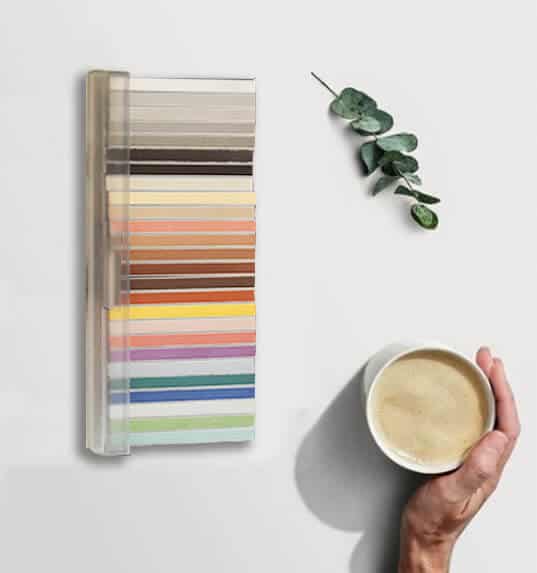
For added precision, consider reaching out to grout companies for physical grout samples in form of color sample kit. Incorporating these samples into your mosaic mood board and decision-making process provides a tangible, hands-on experience, allowing you to assess color compatibility and make informed choices about the final aesthetic impact of your mosaic.
Post Installation Color Adjustment & Grout Preservation
Even after the initial grouting, your mosaic journey continues with color adjustments and preservation measures. This section explores two essential aspects: grout staining for color correction and the importance of regular grout sealing.
Color Correction (for Light Grout)
If the grout’s color didn’t turn out as expected or if adjustments are necessary, grout staining provides a solution. This is particularly effective for lighter grout shades. Stain products are available in various tones, allowing you to darken or adjust the color to better suit your artistic vision.
- Testing Before Application: Before applying a grout stain, conduct a small test in an inconspicuous area to ensure the desired color is achieved. This precautionary step prevents any unforeseen consequences on the overall mosaic appearance.
- Application Process: Follow the manufacturer’s instructions for grout stain application carefully. Typically, it involves applying the stain evenly across the grout lines and allowing it to penetrate. Wiping away excess stain before it dries is crucial for a uniform result.
- Sealing After Staining: Once the grout stain has dried, consider applying a grout sealer to protect both the stain and the grout. This ensures the longevity of the adjusted color and provides added resistance against staining agents.
Regular Grout Sealing
As time progresses, the cementitious grout in your mosaic might become more porous and susceptible to wear, akin to any surface facing the daily grind. Regular grout sealing acts as a protective shield, defending against wear from foot traffic, cleaning efforts, and environmental elements.
In extreme cases where grout wears off, there’s a heightened risk of mosaic tiles loosening and, in the worst scenarios, falling out. Additionally, unsealed grout poses another challenge – it readily absorbs stains from spills and accumulates dirt over time. Let grout sealing be your defense, preserving the structural integrity and aesthetic appeal of your mosaic for years to come.
- Frequency of Sealing: Grout, especially in high-traffic areas, is prone to wear and tear. Regular sealing, ideally once or twice a year, helps preserve the color, prevent staining, and maintain the overall integrity of your mosaic.
- Choosing the Right Sealer: Select a grout sealer compatible with your mosaic’s specific needs. For translucent epoxy grout, opt for sealers designed to enhance durability without altering the grout’s unique characteristics.
- Application Process: Before applying a sealer, ensure the grout lines are clean and free of debris. Apply the sealer evenly across the grout, allowing it to penetrate. Wipe away excess sealer promptly to avoid residue.
- Consideration for Specific Environments: In areas exposed to moisture, such as bathrooms or kitchens, a high-quality sealer with waterproofing properties is crucial. Tailor your choice of sealer based on the environmental conditions your mosaic will face.
B. Grout Color for Multicolored Mosaic Artworks
Creating a mosaic with a myriad of colors poses a unique challenge.
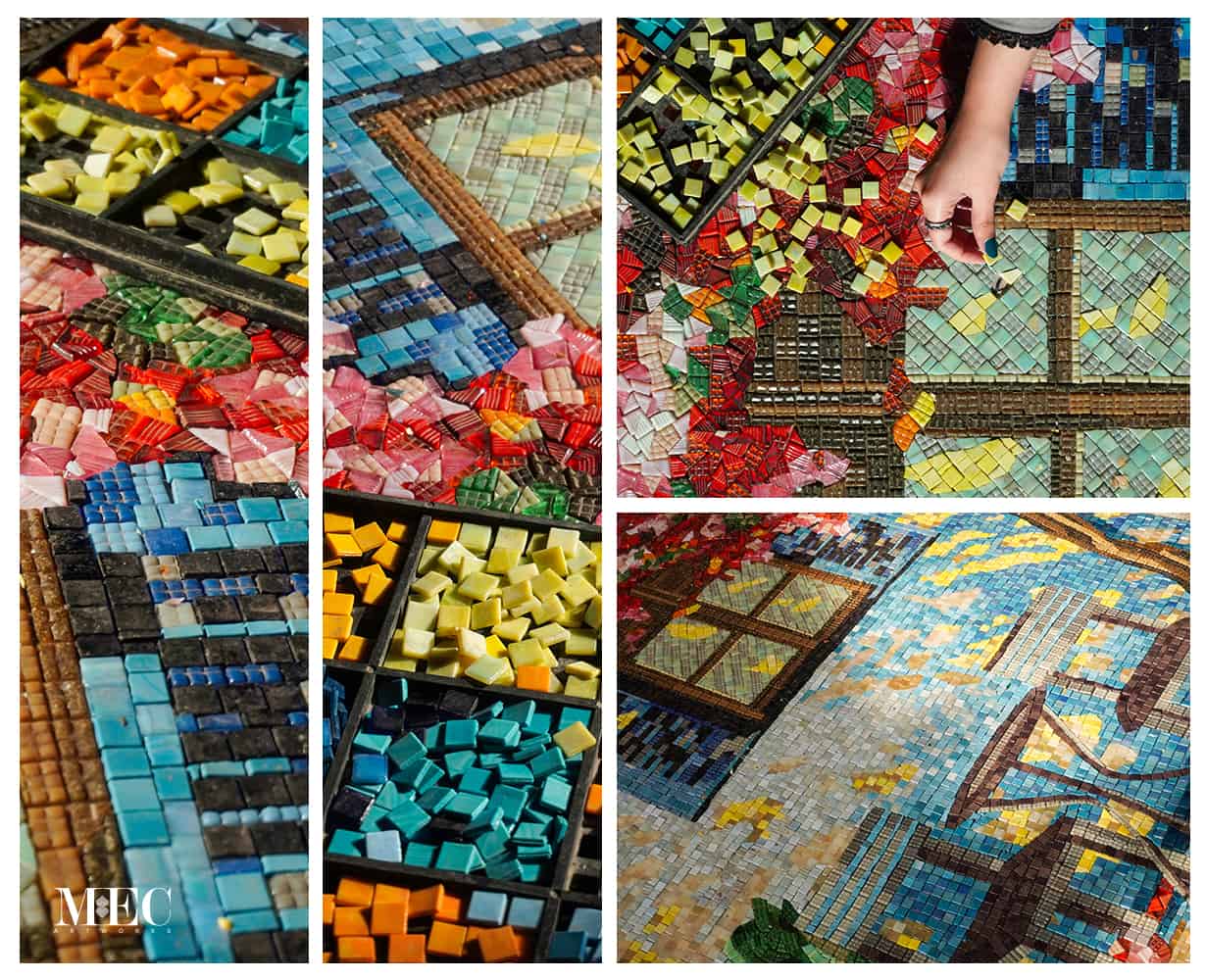
Custom Mosaic Artwork Challenges
Navigating the intricacies of multicolored mosaic artworks requires strategic grout color selection. A color that harmonizes with one segment of the palette might clash or blend too closely with another, creating an undesirable contrast. In such scenarios, opting for a medium gray grout is a safe option. However, it’s crucial to pinpoint the exact shade that complements the specific nuances of the mosaic artwork you’ve chosen. Platforms like MEC offer virtual demonstrations to help you visualize the impact of different grout shades on your custom PIXL artworks.
The right decision ensures a balanced and visually appealing outcome for your custom mosaic masterpiece
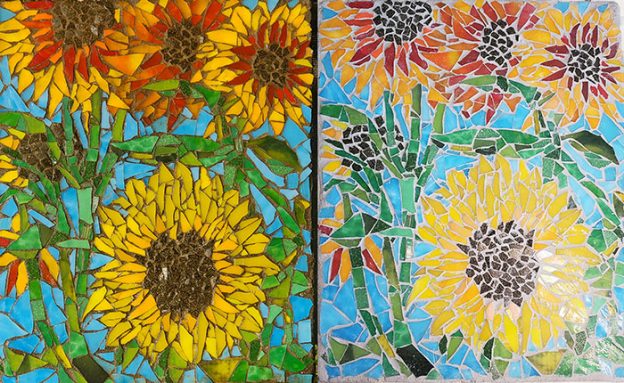
Translucent Epoxy Grout: A Game-Changer
The right grout color is easier to find when working with a single color mosaic tile art. However, when it comes to artistic glass tiles that feature several colors (anywhere between half a dozen to over two dozens!), it is a bit trickier to get the perfect grout. What if we told you that the solution to this problem is eliminating “color” altogether. Behold! The Translucent Epoxy Grout.
The perfect grout color for mosaic art tiles might be no color at all!
Clear epoxy grout is ideal for maintaining visual continuity to the mosaic. The semi-transparent nature lets light refract and reflect light in a way that it takes on the color characteristics of the tile being used. This way, it doesn’t interfere with the design and aesthetic of the tiles. The epoxy grout assumes a neutral tone and works with just about any glass tile color, wonderfully complementing them and thereby making the installation seamless.
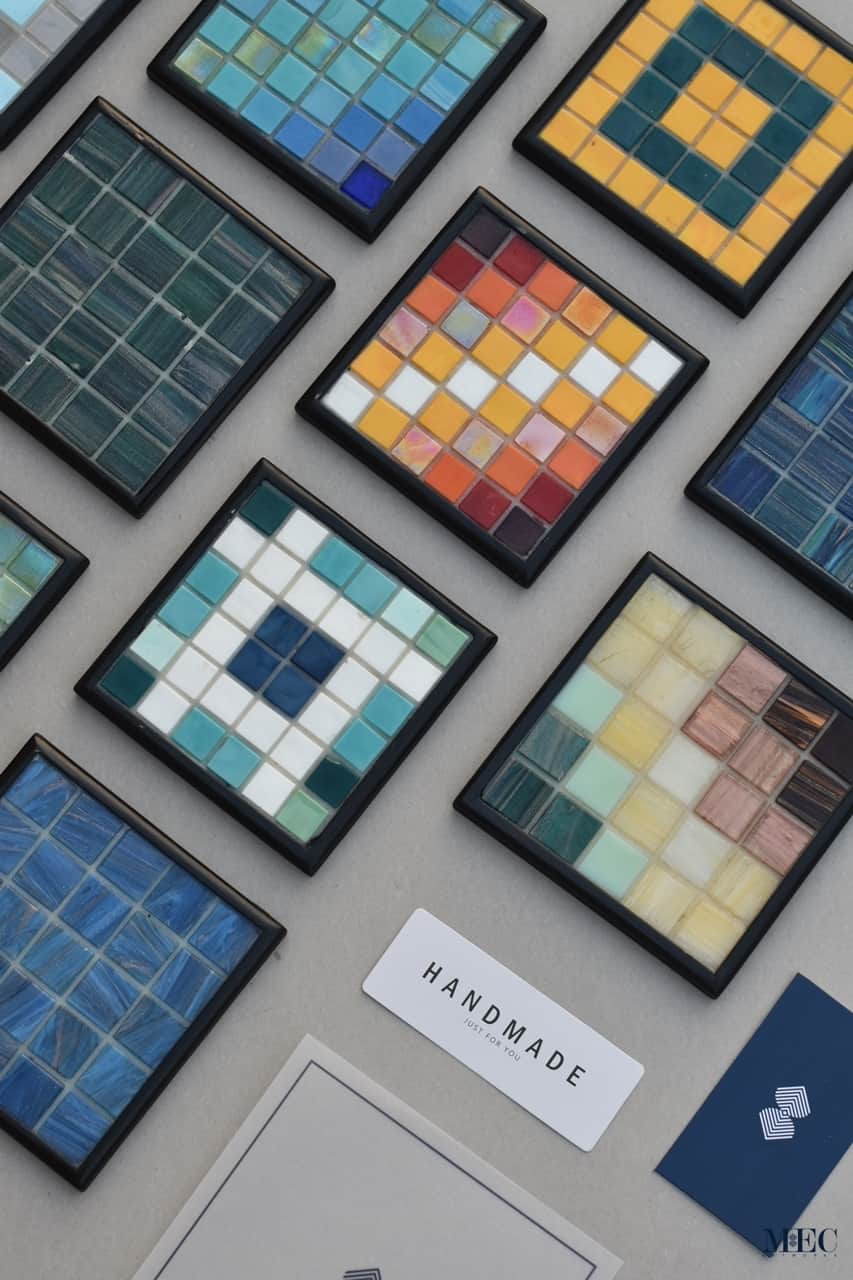
With epoxy grout, you no longer have to use different grout colors for different glass mosaic tile art colors.
We have listed some pros and cons of epoxy resin grout for you to weigh and compare before making the decision to shift from the traditional cementitious option.
Pros
- Works with all glass mosaic colors
- Enhances the visual appeal and aesthetic of glass mosaic
- High-quality and durable
- Safe and non-toxic | preferred for hygiene sensitive environments like hospitals
- No grout sealing required
- Suitable for a wide range of environments including high traffic areas and backsplashes
- Waterproof & stain resistant
- Some epoxy grout variants are suitable for swimming pools and outdoor applications as well
- Epoxy grout is resistant to cracks, harsh weather conditions and a wide range of chemicals.
Cons
- Costs more than regular cement-based based grout options
- Mixing and application requires more time and work
- Shaping the grout is easier with cement-based materials
- Does not work well with porous or textured times, cleaning the epoxy grout out of the details is tricky.
Here are some of the best translucent epoxy grout options available in the market:
- Starlike® Crystal
- Bostik | Pre-Mixed Translucent Grout Glass-Filled Diamond
- Laticrete | SPECTRALOCK® PRO Premium Translucent Grout
- MAPEI | MAPEI Flexcolor™ 3D (Crystal Moon #201)
Epoxy resin grout is recommended for shower areas, floors and hygiene sensitive environments such as healthcare facilities. What makes epoxy grout an excellent choice for these areas is its waterproof and non-porus nature. Unsealed cementitious grout absorbs and water and is more susceptible to mold and microbial growth. Epoxy is also stain-proof, thereby making it a great grouting choice for kitchen mosaic tile backsplash.
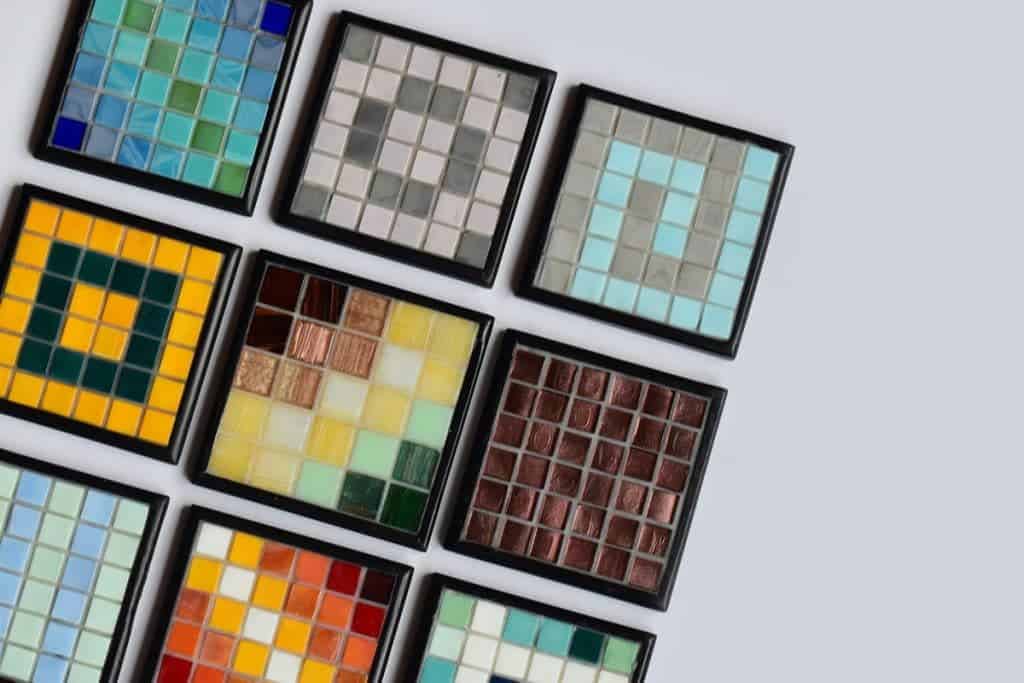
Other Considerations
There are a few things that you have to keep in mind when working with clear epoxy grout:
- A white base is recommended for laying and fixing of glass tiles that you intend to grout with clear epoxy grout.
- Some epoxy grout comes in two parts that have to be mixed before application, others come in a ready-to-use form.
- Make sure that there is no grout residue left on the tile surface after installation. The cleaning is easier before the epoxy grout dries. Once it is dried, you might need an acid wash to remove the epoxy residues.
- Epoxy grout is made from a two-part resin and has to be prepared in small batches.
The benefits of using a premium translucent grouting material for colorful mosaic artworks outweigh the cons. But is it worth the extra cost? We think it is worth investing in a material that was specially developed with glass mosaic art tile in mind. Save yourself the trouble of frequent selling and maintenance. Leave behind all worries of unsightly discolored and crumbling cement grout and go for the epoxy option if your project budget allows it. The bottom line is that if used properly the clear epoxy grout will be the best option for your glass mosaic project in the long run.
Sources & Further Reading
- Tile Club – How to Choose the Right Grout Color for Your Tiles
- datile – How to Choose Grout Color
- Gatherus – 10 Of The Best Tile & Grout Color Combinations
- Livingetc – The best tile and grout color combinations – designer-approved pairings
